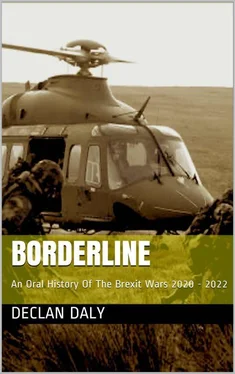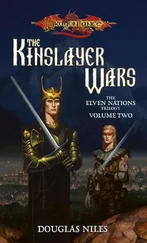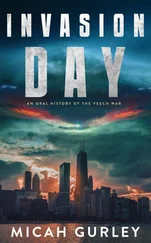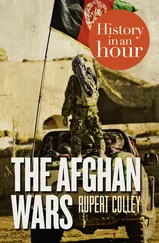So, back to the story. We did proceed tactically, but we did fairly hustle as well, to get over there. Once we got to the wooded area or just before it, we stopped got it together and then proceeded with a bit more care. It was evident, even at night it was evident, under NVGs that we were using just how much damage had been done to the area and you could still hear hot metal sizzling in the rain. There were fresh strike marks on the trees, some branches cut off entirely just by GPMG fire and that was just on the outside of the wooded area itself. The further you progressed the more hellish it became. Approaching the area around the clearing, and where we might have expected to start encountering survivors or IEDS or anything, there was nothing, but it was pretty clear that anything in that area had been taken out. At that point I was concerned about secondary explosions, if anything was still burning, any ammunition that might still go off and injure the team.
Once we got into the area of the mortar pit itself, you could look around from there and you could see the fort quite clearly, and you know it was it was quite frightening that, to see how under observation we were on a day-to-day basis, but anyway in this pit itself that's where we found remains of the mortar crew. Very badly shot up, very disassembled would be the word I'd use, by the incoming fire. It was impossible to tell what had done it, was it the mortars or whatever, but I think a lot of it was done by the direct fire cannons on the Mowags, just from the way the ground was chewed up. It was four people that we saw altogether in just in that one area, all dead. All dead straight away, don't believe what you're reading online that we were executing people after the fact, there was none of that nor need for it.
We carried on, obviously, to search the wooded area. We called it in first of course, but carried on just a search of the area around the clearing and we found more guys in there who, when the rounds started coming in, there was two guys that made a run for it. They, they were all shot up by 7.62 and that was my first time seeing people, in four overseas trip that was my first time seeing people that had been shot up quite so badly. Obviously, our own guys during the course of the previous weeks, but that was a different thing. It had quite an effect I have to say, not just on me on some of the younger boys that were there as well. But they held it together, they did the job right, the area was cleared and we called it in and then we drew back out to the edge of the woods until the QRF came in and sealed off the area and at that point we were brought back into the fort itself.’
The action described above by Sgt Andy Cunningham is typical of the events of the time. The IRA were attempting to assert themselves in the area, but despite the influx of equipment and existing command elements, they were still making some mistakes due to the inexperience of their newer members. The Defence Forces capitalised on this at each opportunity. It also shows how the full complement of Air Corps ISR assets had not yet been deployed to provide 24/7 coverage and indeed that the ground based ISR assets were also spread thinly. This sometimes meant that the enemy could get quite close.
He also describes that the sight of dead people on the enemy side had an effect on him. With the same soldiers often rotating through the same areas more frequently than intended and with few opportunities to rest, this was a problem that grew too – soldiers were seeing not only enemy dead, they were watching their own comrades die as well. The death count for the Black Winter exceeded that which Ireland sustained throughout the whole of the Troubles, but on top of that there were the many injured. These deaths and injuries not only had a direct emotional effect on troops, it had the secondary effect of creating more vacancies which had to be filled, meaning the same soldiers were back on the border again very quickly.
Every combat arm unit in the army had provided troops to the counter insurgency fight in one way or another and had sustained that effort. The ability to rotate troops was low and the demand was high. In addition to witnessing death, soldiers were now being called on to fire back in numbers which the DF had not been used to in quite some time. This too had an effect over time. Sgt Dan Morris recounted the first time he had to open fire at someone in an interview shortly before his death:
Sgt Dan Morris
‘I do remember the first time alright; I don’t think you forget, or not easily anyway. I was on a patrol, standard daytime left out patrol near Starfort 11. We were moving along the edge of a wood, there was a clear area of fields about 50m wide between us and another wooded area running parallel, maybe a bit less than that. We were back in a bit into the trees, just to be out of sight, when we picked up movement the other side, they were more or less straight across from us! My first thought was, ‘they’re patrolling like us, like they own the place’ and I was a bit affronted I suppose by that, but from their perspective I guess it would’ve made sense.
There was four of them, two with big backpacks of kit which turned out to be explosives, two more with AKs. I was about to call it in as a QRF job, weight of numbers and all that, when one of the young lads decides he’s going to challenge them like he’s on the gate into barracks or something. They saw him, probably not the other three of us in the treeline and everyone froze for a second, to see what would happen next ‘cos the fella that shouted worked out he’d made a mistake as soon as he opened his mouth. One of them went to raise his rifle and we all hit the ground and fired. I saw the guy with the raised rifle go down straight away, but that wasn’t me. I was shooting at the other guy with a rifle who had worked it out and gotten down as well. I hit him too. The guys with the backpacks could probably have just legged it into the woods and gotten away, instead one of them picked up the rifles and threw them into the open, they surrendered! We were surprised by that, but I guess a bag full of bomb on your back is good motivation to not get shot at.
Anyway, we ceased fire and, it’s a strange thing; whenever you stop firing a Steyr rifle, there’s this vibration in the springs in the butt of the gun that you feel through your cheekbone as much as hear it. And that was the same then as it was on the rifle range or on exercises or anything else. It was just so strange to feel something so familiar in such a new circumstance and that brought me back to reality. I called for an ammo/cas – how much ammo do you have left and are you wounded – from my own lads and then we secured the prisoners. We called in a medevac heli for their wounded, the two boys with rifles were still alive, one chest wound and I had hit the other fella in the head. He was barely conscious, the round had hit the rifle before him. It was a very uncomfortable thing to experience, here’s this guy lying in blood and I did it to him. Regardless of the context.’
The continual degradation of Starfort 4, through casualties, disease and sheer unsuitability to it’s task ultimately led to a number of dramatic and well needed changes in the organisation of the physical defence of the border and the Defence Organisation itself. I say this despite the fact that many in the Defence Forces will not use the term and seek to distance themselves from the Department of Defence (DoD). By the middle of December 2020, the unit occupying the fort had to be relieved. In the harsh winter, they had simply run out of available bodies. Although further casualties would be suffered over the coming months, the bulk of the damage had already been done. All four of the fatal injuries and eighteen of the twenty four casualties through direct combat action and all of the Covid-19 related casualties had been inflicted on C Coy of 2 Bn North Central (The border Bns were comprised of troops from various units in the Defence Forces in the same manner as overseas units, but stepped outside the established numbering system. To further confuse issues, AO’s or Areas of Operation sometimes overlapped with existing units, for example 2 Bn North Central overlapped in Leitrim with the existing 28 Bn based in Finner and there was no ‘3 Bn West’).
Читать дальше












